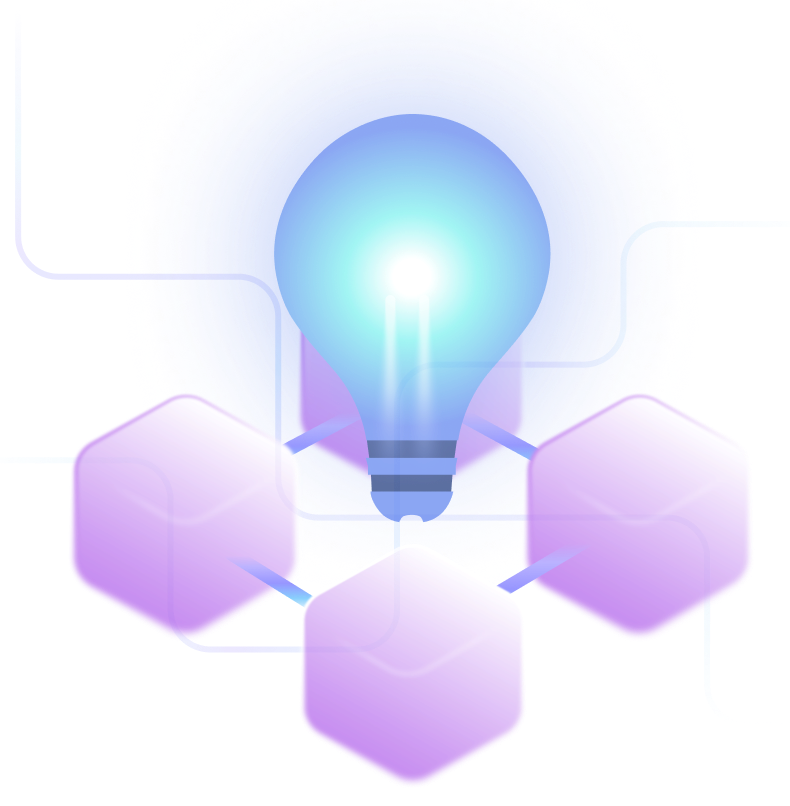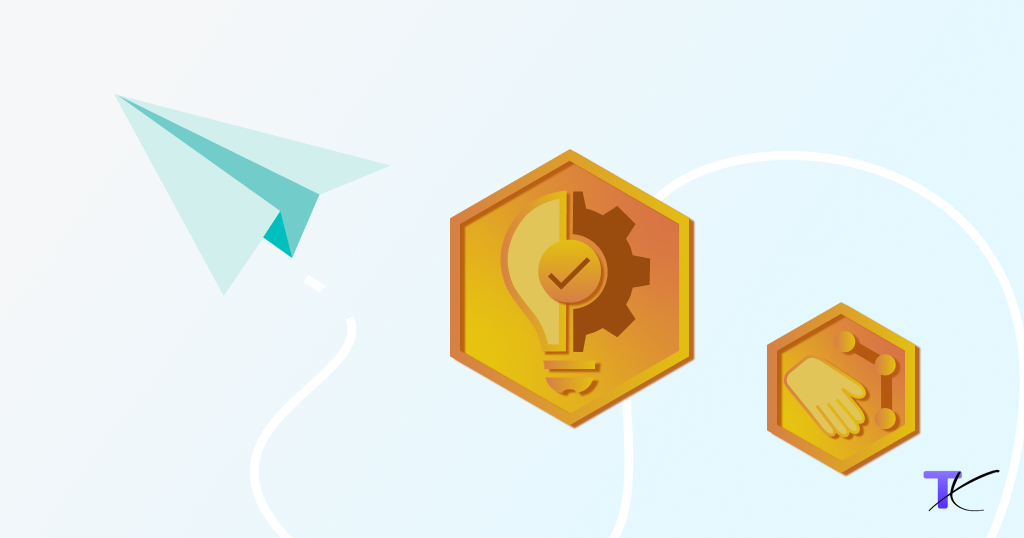Beyond efficiency and liquidity, tokenization solves the trust gap. Verifiable on-chain records let regulators, investors, and partners instantly confirm ownership, restrictions, and attestations, reducing fraud and disputes while shrinking reconciliation cycles.
At TokenX, we’ve helped teams across commodities, fine art, and ESG stand up enterprise-grade solutions that translate blockchain transparency into measurable outcomes: shorter close times, cleaner audits, and new investor access. In short, tokenization turns trust into a measurable, auditable, programmable part of your operations.
TL;DR Summary
- RWA tokenization turns physical and financial assets into programmable digital assets—boosting liquidity, transparency, and efficiency.
- Enterprises use digital twins to verify provenance and automate compliance across supply chains, finance, and ESG.
- Enterprise upside: unlock new revenue streams via fractional offerings, secondary-market offerings, data/attestation services, asset-backed financing products, and subscription/product add-ons.
👉 Curious how RWAs can boost your revenue? Contact us.
What Are Real-World Assets (RWAs) and Why Tokenize Them?
Real-world assets are physical or traditional financial assets—real estate, invoices, commodities, fine art, bonds—that can be represented on a blockchain as digital assets. Tokenizing real-world assets (RWAs) involves creating a digital token that represents ownership of the underlying physical asset. This token is stored on the blockchain, providing a secure, immutable, and auditable record of the asset’s ownership. The process links the token to the real-world asset through verification and documentation, ensuring that every transfer of ownership can be tracked and validated on-chain. Tokenization gives each asset a compliant, verifiable digital twin with machine-readable attributes such as ownership, rights, restrictions, and compliance status.
What are the Top Benefits of Tokenizing RWAs with Blockchain Technology?
- Liquidity: Fractionalize high-value assets to reach new investor segments and create secondary markets.
- Transparency: Verifiable records reduce reconciliation work and lower fraud exposure.
- Efficiency: Programmatic rules for KYB and KYC, transfer restrictions, and lockups streamline operations.
- Access: Global distribution with fine-grained permissions and automated compliance checks.
The Tokenization Process
At TokenX, we guide businesses through every step of the tokenization process, ensuring the creation of a seamless, transparent, and secure solution that bridges the gap between physical and digital worlds. Tokenizing a real-world asset involves several key steps:
- Asset Selection: Identify the physical or financial asset to tokenize (e.g., real estate, fine art, commodities).
- Token Specifications: Define whether the token is fungible (e.g., ERC-20) or non-fungible (e.g., ERC-721) and outline its relevant properties.
- Blockchain Integration: Decide which blockchain network to use for issuing the tokens. TokenX supports multiple chains for flexibility.
- Verification: Use secure oracles to verify the real-world data that backs the token, such as the asset’s ownership, authenticity, and value.
- Issuance: Mint the tokens on the selected blockchain, making them ready for transfer or trade.
If the details seem complex, don’t worry—many businesses prefer to work with partners who specialize in tokenization. If you’d rather focus on your core business, we’re happy to help. Get in touch with us for a free consultation, and our Web3 experts will provide insights and recommendations tailored to your needs.
Have questions about RWA tokenization?
Our team helps enterprises, galleries, and innovators bring real-world assets on-chain with security and transparency. Contact us to explore how TokenX can support your next initiative.
Contact Us
Real-World Assets in DeFi and Beyond
Tokenized RWAs play a crucial role in the evolution of decentralized finance (DeFi). While DeFi has demonstrated the benefits of blockchain-based finance, most of the assets involved are still limited to the digital realm. Tokenizing RWAs brings physical and traditional assets into the DeFi ecosystem, allowing them to interact with blockchain-based financial services.
As tokenized RWAs become more prevalent, they will drive the growth of decentralized financial products that blend traditional and blockchain-based assets. For example, TokenX’s solutions are enabling asset-backed tokens for use in decentralized lending, collateralized debt positions, and more.
Practical Use Cases of RWAs
Not every asset or workflow needs a token. High-signal entry points that succeed in production include:
- Supply chain and provenance: Serialize inventory or certificates to reduce fraud and enable instant recalls and audits. We explain the approach in our article on crushing fraud with supply chain transparency.
- Asset-backed financing: Turn invoices, income streams, or real estate shares into programmable collateral to accelerate credit decisions.
- Commodities and natural resources: Create traceable lots with embedded compliance and ESG disclosures.
- Fine art and luxury goods: Pair physical items with tamper-evident tags and digital twins for authentication and resale integrity, as discussed in how tokenization revolutionizes luxury goods.
- ESG and carbon markets: Tokenize credits with verifiable issuance, retirement, and chain-of-custody records.
Prioritize flows with measurable friction such as settlements, audits, or compliance checks. Tokenization shines where verification or coordination costs are high.
How TokenX De-Risks Your First (or Next) RWA Project
At TokenX, we don’t just simplify the process of tokenizing real-world assets—we empower businesses to leverage blockchain’s full potential with ease and precision. Here’s why TokenX is the partner of choice for businesses looking to enter the world of asset tokenization:
- Use-case fit and design sprints: We co-design your data model, rights, and controls, then validate with a focused pilot.
- Custom Solutions for Every Asset: Bespoke tokenization solutions are tailored to your specific needs, whether you’re dealing with real estate, commodities, fine art, or other high-value assets. We offer features like multi-chain support, asset tagging, fractional ownership, and API integration for real-time updates.
- Multi-Blockchain Flexibility: Choose Ethereum, Polygon, Arbitrum, etc. or even custom private networks for the right mix of reach, cost, and speed.
- Fractionalization and planned liquidity: Unlock access for new investor segments and enable orderly secondary market activity. By offering assets in smaller, more accessible units, democratize access to high-value investments and open new opportunities for a wider range of investors.
- Integrations that stick: Connect ERPs, custodians, KYC vendors, and data sources.
- End-to-end service: Dedicated guidance on chain selection, security, and program operations to hit milestones faster.
- Scalable governance: Move from sandbox to production using the same tooling while enabling more controls as you grow.
The Future of RWA Tokenization
Tokenization is not just a passing trend—it’s the future of how we manage, trade, and invest in assets across industries. As blockchain technology continues to evolve, the potential applications of tokenization will expand, bringing even greater efficiencies, transparency, and accessibility to the global economy. Here are some key trends to watch as RWA tokenization reshapes the future:
- Tokenization Across Every Asset Class: From real estate to rare collectibles, tokenization will extend beyond financial assets to include a wide array of physical and digital goods. As token standards mature and adoption increases, more industries will leverage tokenization to unlock liquidity, enhance transparency, and reduce transaction costs.
- Integration with DeFi: The rise of decentralized finance (DeFi) will be significantly enhanced by tokenized real-world assets. As more physical and financial assets enter the blockchain ecosystem, they will enable the creation of new DeFi products, such as collateralized loans and asset-backed stablecoins, providing greater access to capital and financial inclusion.
- Globalized Investment Markets: Tokenization opens up global markets by allowing fractional ownership, breaking down geographical and financial barriers. As blockchain technology continues to gain acceptance, investors from anywhere in the world will be able to access a wider variety of assets, from farmland to fine art, creating more diversified and dynamic investment portfolios.
- Sustainability and ESG Integration: Tokenization offers a powerful tool for driving sustainability and transparency in sectors like carbon credits, renewable energy, and natural resources. By digitizing and tracking assets like carbon offsets and renewable energy certificates, tokenization will play a key role in advancing environmental, social, and governance (ESG) goals.
🚀 Ready to unlock liquidity and trust for your business?
👉 Contact us today for a free consultation and discover how your assets can create new revenue streams, attract global investors, and secure long-term value on the blockchain.
FAQs
1. What is the difference between tokenization and a “digital certificate”?
A digital certificate is a static file; tokenization creates a programmable digital twin with rules (transfer limits, rights, attestations) that can update over time.
2. Do I need a public or private blockchain to tokenize assets?
Short answer: No—you don’t need a public blockchain.
You can tokenize on a private network, a public L1/L2 (Ethereum, Polygon, Arbitrum, Optimism), or a hybrid. Choose based on sensitivity, cost, speed, and ecosystem goals.
- Private: maximum control and privacy for regulated or confidential assets. TokenX can set up and manage a private network for you.
- Public L1/L2: broad distribution and easy verification; L2s offer lower fees and faster settlement.
- Hybrid: keep sensitive activity private and mirror proofs or selected states to public chains for transparency/liquidity.
With TokenX, access is policy-driven on any chain: Public View, Private View (Owner Only), Authenticated View, or Preview (no download). Rule of thumb: confidential or partner-only → private/hybrid; external distribution or DeFi composability → public L2.
3. What happens if off-chain facts change (valuation, custody, ESG data)?
Tokens stay immutable, but TokenX appends records to the original token. New attestations (regulatory updates, custody/ownership transfers, shipping events, quality checks, valuation changes) are linked back to create a tamper-evident audit trail—so the core token remains intact while stakeholders see the latest state and full history.
4. Where can I learn more?
Intro: What Is Tokenization?
Implementation: Unlocking Value Through RWA Asset Tokenization: A Step-by-Step Guide
Market perspectives: IBM—What is tokenization?, WEF—Tokenization in Finance, BIS—Future monetary system


